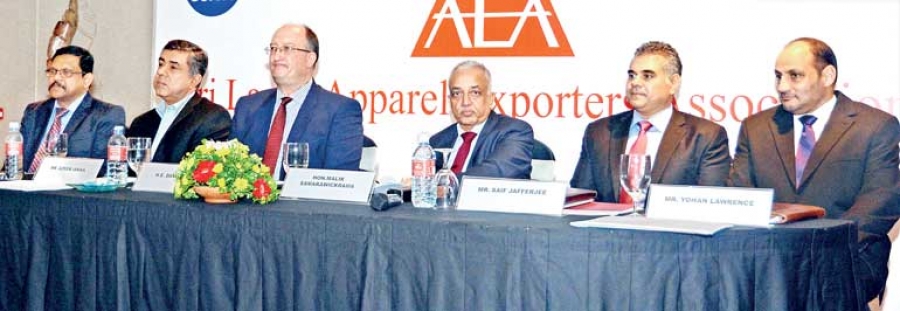
Targets $10 billion in exports

Apparel segment is the highest contributor to exports in the economy. In 2014, apparel experts were worth $4.9 billion, just short of the $5 billion target, increasing by 9.2 per cent since 2013. Now the country has set an ambitious export target of $10 billion for the apparel industry, which it aims to achieve by 2025.
After the new Unity government led by President Maithripala Sirisena and Prime Minister Ranil Wickremesinghe, came to power this year, two premier apparel associations in Sri Lanka decided to join hands. Sri Lanka Apparel Exporters Association (SLAEA) merged with the 200 Garment Factory Program Association (200 GFP) to strengthen the aim of all their members. Jafferjee said the association is pleased with the 19th Amendment to the Constitution and the establishment of independent commissions, which are clear signs that Sri Lanka is stepping in the right direction and working towards creating prosperity in a fair and just society. “The constructive engagement with International organisations to address human right issues though a domestic mechanism is another positive step to improve our international relations,” he said.
Sri Lanka is the largest industrial exporter in the country, exporting $4.9 billion in 2014 with a value addition of 60 per cent. With the advent of GSP+, the industry expects to increase its growth rate substantially in the future. The industries’ credentials as a green, ethical, high quality, reliable manufacturing destination is globally recognised. “We will continue to strengthen the competitive position with investment in technology, automation, lean management systems and upskilling our associates. We have also begun our product innovation and design journey to get high value-addition on the front end. Our local brands are making waves, and we expect more to fill the retail malls of regional markets in the future,” said Jafferjee.
Facing challenges amid stiff competition
Jafferjee further said for the past few the growing number of multi-lateral, regional and bilateral trading arrangements have been a concern. The preliminary conclusion of the Transpacific Partnership Agreement (TPP) among 12 nations, covering 45 per cent of the world GDP, will be a serious challenge to the industry. “We, as the largest exporter in the country, fully endorse the Prime Minister’s policy direction that we urgently require an international trade policy framework to bridge such threats. India, China, the US, Korea and Singapore are already on the road map of the government for such negotiations. Our membership also believes that Japan, Brazil and Turkey, too, should be added to this for preferential trade negotiations.”
The industry is happy that the government is taking positive measures to regain GSP+. The steps taken towards creating good governance and an answer to some of the serious issues that were raised while withdrawing GSP+.
Jafferjee also highlighted issues being faced by the industry including the revision of PAL from 5 per cent to 7.5 per cent, and NBT from 2 per cent to 4 per cent that will have a serious impact on capital investment program, revision on duty on sale of garments to Rs 200 per piece, which is an increase of 800 per cent from the existing rate structure, income tax rate revision from 12 to 15 per cent for value added exports and under the reform measures, the domestic market and export income are unified into one standard rate of 15 per cent. He also urged for government intervention in wage process be limited only to tri-partite arrangements of the Wages Board for the establishment of minimum wages for the industry.
On a concluding note, Jafferjee said, “We are encouraged that even today, seven advanced economies are occupying spots among the 10 largest exporters of apparel in the world, which only strengthens our conviction that we can continue to grow and play this role for many years. In this backdrop, we have set our own a target of $ 10 billion by 2025 and continue to be a strong player, not only in rural Sri Lanka but regionally and globally as well.”
www.srilanka-apparel.com












